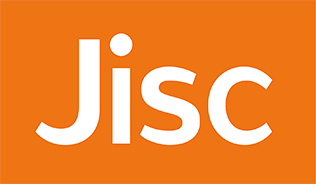COVID-19 and Market Response: Evidence From Listed Firms in Tanzania and Kenya
DOI:
https://doi.org/10.54536/ajebi.v3i3.3645Keywords:
COVID-19, Dynamic Panel Model, Financial Performance, Market ResponseAbstract
This study investigates the effects of COVID-19 on the financial performance of listed firms in the financial and consumer goods industries in Tanzania and Kenya. The choice of Tanzania and Kenya as focal points is motivated by their contrasting responses to the pandemic and their roles as economic powerhouses in the region. Using data from the Dar es Salaam Stock Exchange and Nairobi Stock Exchange spanning the period from 2015 to 2022, the study employs the Dynamic panel-data model, the two-step system GMM, to quantify the impact of the pandemic. The research has two specific objectives: to analyze the effect of COVID-19 on the financial performance of listed firms in the financial industry and to assess its impact on the consumer goods industry in both countries. Key findings reveal that in the financial sector, firms showed resilience with a positive impact on profitability during the pandemic, driven by the adoption of digital financial services and effective risk management. In contrast, the consumer goods sector experienced a significant negative impact, highlighting severe disruptions in supply chains and consumer demand. Notably, firms in Tanzania outperformed those in Kenya, due to less restrictive COVID-19 measures. These findings suggest policymakers should support digital innovations, prudent leveraging, and economic growth to sustain and improve firm profitability during future disruptions.
Downloads
References
Abd-Rashid, I. M., Wan Husain, W. A. F., Abu Samah, I. H., Ibrahim, S., Hamzah, H., & Amlus, M. H. (2023). The initial fiscal policy response to Covid-19 in Malaysia: Th impact on economic stability. AIP Conference Proceedings, 2608(1), 020040. https://doi.org/10.1063/5.0127925.
Altig, D., Barrero, J. M., Bloom, N., Davis, S. J., Meyer, B. H., & Mihaylov, E. (2020). Economic uncertainty before and during the COVID-19 pandemic. Journal of Public Economics, 191, 104274.
Aniemeke, E. H. (2024). Determinants of bank stability in Nigeria. American Journal of Economics and Business Innovation, 3(2). https://doi.org/10.54536/ajebi.v3i2.2675.
Arellano, M., & Bond, S. (1991). Some tests of specification for panel data: Monte Carlo evidence and an application to employment equations. Review of Economic Studies, 58(2), 277-297.
Arthur, W. B. (1989). Competing technologies, increasing returns, and lock-in by historical events. The Economic Journal, 99(394), 116-131.
Baker, S. R., Bloom, N., & Davis, S. J. (2020). The unprecedented stock market reaction to COVID-19. The Review of Asset Pricing Studies, 10(4), 742-758.
Barney, J. (1991). Firm resources and sustained competitive advantage. Journal of Management, 17(1), 99-120.
Beck, T., Demirgüç-Kunt, A., & Levine, R. (2010). Financial institutions and markets across countries and over time: Data and analysis. World Bank Economic Review, 24(1), 77-92.
Berger, A. N., & Bouwman, C. H. (2017). Bank liquidity creation, monetary policy, and financial crises. Journal of Financial Stability, 30, 139-155.
Bhak, B. H., & Gort, M. (2022). Firm-level recent profitability and acquisition performance: Exploring competing theoretical perspectives. Eurasian Business Review. 567-589. https://doi.org/10.1007/s40821-022-00295-4
Bittlingmayer, G. (2000). Output, stock volatility, and political uncertainty in a natural experiment: Germany, 1880-1940. Journal of Finance, 55(6), 2243-2277.
Boyd, J. H., Levine, R., & Smith, B. D. (2001). The impact of inflation on financial sector performance. Journal of Monetary Economics, 47(2), 221-248.
Caporale, G. M., Kang, W. Y., Spagnolo, F., & Spagnolo, N. (2022). The COVID-19 pandemic, policy responses, and stock markets in the G20. International Economics, 77–90. https://doi.org/10.1016/j.inteco.2022.09.001
Carletti, E., Oliviero, T., Pagano, M., Pelizzon, L., & Subrahmanyam, M. G. (2020). The COVID-19 shock and equity shortfall: Firm-level evidence from Italy. The Review of Corporate Finance Studies, 9(3), 534-568.
Chen, H., Qian, W., & Wen, Q. (2020). The impact of the COVID-19 pandemic on consumption: Learning from high frequency transaction data. SSRN Electronic Journal, 119245. https://doi.org/10.2139/ssrn.3568574
Christensen, C. M. (1997). The innovator’s dilemma: When new technologies cause great firms to fail. Harvard Business Review Press.
Cutcu, I., Kılıç, Y., & Çütcü, İ. (2020). Stock market response to Coronavirus (COVID-19) pandemic. Journal of Applied Economics and Business Research JAEBR, 10, 207–220. Retrieved from https://www.researchgate.net/publication/348113980
Demirgüç-Kunt, A., & Huizinga, H. (2010). Bank activity and funding strategies: The impact on risk and returns. Journal of Financial Economics, 98(3), 626-650.
Demirgüç-Kunt, A., Pedraza, A., & Ruiz-Ortega, C. (2020). Banking sector performance during the COVID-19 crisis. World Bank Research and Policy Briefs, 148356.
DiMaggio, P. J., & Powell, W. W. (1983). The iron cage revisited: Institutional isomorphism and collective rationality in organizational fields. American Sociological Review, 48(2), 147-160.
Ding, W., Levine, R., Lin, C., & Xie, W. (2021). Corporate immunity to the COVID-19 pandemic. Journal of Financial Economics, 141(2), 502-528.
Estrada, M. A. R., & Koutronas, E. (2020). The economic effects of COVID-19: Evidence from a new methodology. Economic Analysis and Policy, 68, 1-11.
Fahlenbrach, R., Rageth, K., & Stulz, R. M. (2021). How valuable is financial flexibility when revenue stops? Evidence from the COVID-19 crisis. Review of Financial Studies, 34(11), 5474-5521.
Fama, E. F., & French, K. R. (2002). Testing trade-off and pecking order predictions about dividends and debt. Review of Financial Studies, 1-33. https://doi.org/10.1093/rfs/15.1.1
Fosu, A. K., & Frimpong, J. M. (2021). The economic impact of COVID-19 on Ghanaian firms. Journal of African Economies, 30(1), 52-70.
Frank, M. Z., & Goyal, V. K. (2009). Capital structure decisions: Which factors are reliably important? Financial Management, 38(1), 1-37.
Friedman, M. (1968). The role of monetary policy. American Economic Review, 58(1), 1-17.
Goddard, J., Molyneux, P., & Wilson, J. O. S. (2015). Banking in the European Union: Deregulation, crisis, and renewal. Oxford University Press.
Gormsen, N. J., & Koijen, R. S. J. (2020). Coronavirus: Impact on stock prices and growth expectations. The Review of Asset Pricing Studies, 10(4), 574-597.
Gourinchas, P. O., Kalemli-Özcan., Penciakova, V., & Sander, N. (2021). COVID-19 and SME failures. NBER Working Paper No. 27877.
Gropp, R., & Heider, F. (2010). The determinants of bank capital structure. Review of Finance, 14(4), 587-622.
Haddad, H., Odeh, M., Haider, A., & Khan, M. A. (2022). Institutions, culture, or interaction: What determines the financial market development in emerging markets? Sustainability, 14(23), 15883. https://doi.org/10.3390/su142315883
Harjoto, M. A., & Rossi, F. (2023). Market reaction to the COVID-19 pandemic: evidence from emerging markets. International Journal of Emerging Markets, 173–199. https://doi.org/10.1108/IJOEM-05-2020-0545
Jensen, M. C., & Meckling, W. H. (1976). Theory of the firm: Managerial behavior, agency costs, and ownership structure. Journal of Financial Economics, 3(4), 305-360.
Kalubanga, M., & Gudergan, S. (2022). Digital technologies and firm resilience during COVID-19: A dynamic panel data approach. Annals of Operations Research.
Kraus, A., & Litzenberger, R. H. (1973). A state-preference model of optimal financial leverage. The Journal of Finance, 28(4), 911-922.
Kumar, R. (2024). Achieving sustainability in India through modern payment system: An empirical study. American Journal of Economics and Business Innovation, 3(1), 92–99. https://doi.org/10.54536/ajebi.v3i1.2411
La Porta, R., Lopez-de-Silanes, F., Shleifer, A., & Vishny, R. W. (1998). Law and finance. Journal of Political Economy, 106(6), 1113-1155.
Machmuddah, Z., Utomo, S. D., Suhartono, E., Ali, S., & Ghulam, W. A. (2020). Stock market reaction to COVID-19: Evidence in customer goods sector with the implication for open innovation. Journal of Open Innovation: Technology, Market, and Complexity.
Modigliani, F., & Miller, M. H. (1963). Corporate income taxes and the cost of capital: A correction. American Economic Review, 53(3), 433-443.
Muthinja, M. M., & Chipeta, C. (2020). The resilience of Kenyan firms during the COVID-19 pandemic. African Development Review, 32(4), 453-463.
North, D. C. (1990). Institutions, institutional change and economic performance. Cambridge University Press.
Nwosu, E. O., Ogbuabor, J. E., & Nnaji, C. E. (2021). COVID-19 pandemic and the Nigerian economy: Firm-level evidence. Journal of Economics and International Finance, 13(1), 1-12.
Ozili, P. K. (2020). COVID-19 in Africa: Socio-economic impact, policy response and opportunities. International Journal of Sociology and Social Policy, 40(9/10), 928-948.
Pagano, M., Wagner, C., & Zechner, J. (2020). COVID-19, lockdowns, and the economic impact of firm-level heterogeneity. The Review of Financial Studies, 33(11), 4555-4598.
Penrose, E. T. (1959). The theory of the growth of the firm. Oxford University Press.
Qin, W., & Hsu, W. (2021). COVID-19 and financial markets: A review of the literature. Finance Research Letters, 101910.
Romer, P. M. (1990). Endogenous technological change. Journal of Political Economy, 98(5, Part 2), S71-S102.
Schumpeter, J. A. (1934). The theory of economic development: An inquiry into profits, capital, credit, interest, and the business cycle. Harvard University Press.
Teece, D. J., Pisano, G., & Shuen, A. (1997). Dynamic capabilities and strategic management. Strategic Management Journal, 509-533.
Tetteh, J. E., Amoah, A., Ofori-Boateng, K., & Hughes, G. (2022). Stock market response to COVID-19 pandemic: A comparative evidence from two emerging markets. Scientific African, 17, e01300. https://doi.org/10.1016/j.sciaf.2022.e01300
Thorbecke, W. (2020). The impact of the COVID-19 pandemic on the US economy: Evidence from the stock market. Journal of Risk and Financial Management, 13(10), 233.
Vo, X. V., Xuan, V. N., & Ha, D. T. (2022). The impact of financial leverage on sustainable growth, market performance, and profitability. Economic Change and Restructuring, 561-588. https://doi.org/10.1007/s10644-022-09325-1
Wernerfelt, B. (1984). A resource-based view of the firm. Strategic Management Journal, 5(2), 171-180.
Wiggins, R. R., & Ruefli, T. W. (2005). Schumpeter’s ghost: Is hyper-competition making the best of times shorter? Strategic Management Journal, 26(10), 887-911.
World Bank. (2020). Kenya’s GDP contracts under weight of COVID-19, impacting lives and livelihoods. Retrieved from https://www.worldbank.org/en/news/press-release/2020/11/25/kenya-gdp-contracts-under-weight-of-covid-19-impacting-lives-and-livelihoods
World Bank. (2020). Tanzania economic update: Addressing the impact of COVID-19. Retrieved from https://documents.worldbank.org/en/publication/documentsreports/documentdetail/240261605740725809/tanzania-economic-update-addressing-the-impact-of-covid-19
Yang, J., & Chen, B. (2021). Impact of firm size on performance: Evidence from listed consumer goods companies in China. Journal of Business Research, 127, 597-605.
Yang, S. (2024). Pandemic, policy, and markets: insights and learning from COVID-19’s impact on global stock behavior. Empirical Economics. https://doi.org/10.1007/s00181-024-02648-2
Zhao, L., Rasoulinezhad, E., Sarker, T. et al. (2023). Effects of COVID-19 on Global Financial Markets: Evidence from Qualitative Research for Developed and Developing Economies. European Journal of Development Research. https://doi.org/10.1057/s41287-021-00494-x
Downloads
Published
How to Cite
Issue
Section
License
Copyright (c) 2024 Ramadhani Nuhu Semvua, Seth Kenedi Mbwambo

This work is licensed under a Creative Commons Attribution 4.0 International License.














